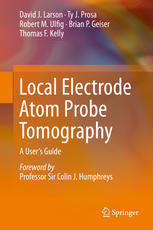

Most ebook files are in PDF format, so you can easily read them using various software such as Foxit Reader or directly on the Google Chrome browser.
Some ebook files are released by publishers in other formats such as .awz, .mobi, .epub, .fb2, etc. You may need to install specific software to read these formats on mobile/PC, such as Calibre.
Please read the tutorial at this link: https://ebookbell.com/faq
We offer FREE conversion to the popular formats you request; however, this may take some time. Therefore, right after payment, please email us, and we will try to provide the service as quickly as possible.
For some exceptional file formats or broken links (if any), please refrain from opening any disputes. Instead, email us first, and we will try to assist within a maximum of 6 hours.
EbookBell Team

0.0
0 reviewsThis book is the first, single-source guide to successful experiments using the local electrode atom probe (LEAP®) microscope. Coverage is both comprehensive and user friendly, including the fundamentals of preparing specimens for the microscope from a variety of materials, the details of the instrumentation used in data collection, the parameters under which optimal data are collected, the current methods of data reconstruction, and selected methods of data analysis. Tricks of the trade are described that are often learned only through trial and error, allowing users to succeed much more quickly in the challenging areas of specimen preparation and data collection. A closing chapter on applications presents selected, state-of-the-art results using the LEAP microscope.